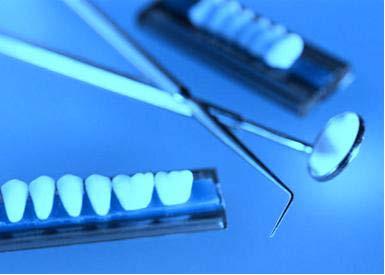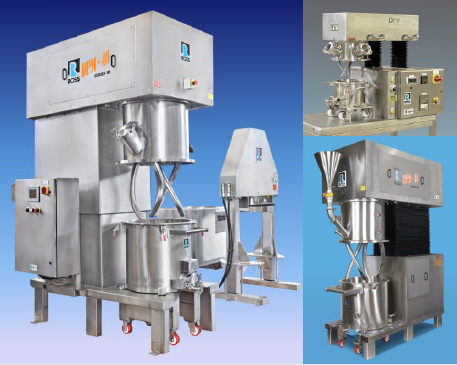Tech Report
Recommended Mixing Equipment for Dental Composites

Application Summary
Dental composites are synthetic polymers filled with reinforcing glass and/or ceramic particles.
A typical mixing procedure starts with blending two or more monomers often of significantly different viscosities. Various particle size fillers are then added to the liquid binder and mixed under vacuum until a homogenous paste is obtained. High amounts of fillers render most dental composites very abrasive. Initiators, inhibitors and pigments may also be added to the hardenable paste.
The ideal mixing equipment for this application must be capable of handling a wide range of viscosities and highly abrasive formulations.
Ross Double Planetary Mixers
Double Planetary Mixers are well-proven equipment for the preparation of dental composites. Traditional designs move materials by rotating two rectangular-shaped paddles on their respective axes as they orbit on a common axis. The blades contact virtually every point of the batch in just 36 revolutions, imparting a very thorough but gentle mixing action. The typical viscosity range of these stirrers goes up to around 2 million centipoise.
Newer design helical blades offer improved mixing and easier handling of viscosity peaks as high as 6 million centipoise. The first of its kind, Ross High Viscosity "HV" Blades (US Patent No. 6,652,137) feature a precisely angled contour which generates a unique mixing action: the sweeping curve firmly pushes batch material forward and downward, keeping it within the mixing zone at all times. The helical flights pass each other in a slicing motion, enabling them to move through a viscous batch without substantial spikes in power draw and amperage.
Mixing abrasive composites in a conventional stainless steel mixer leads to discoloration of the paste (stainless steel particles are incorporated into the formulation). The slightest contamination is not acceptable in dental composites wherein precise optical characteristics are critical. Ross Double Planetary Mixers are used worldwide for various abrasive materials and these are commonly either hard-chrome plated or coated with Kynar (polyvinylidene fluoride) or aluminum oxide.
Other Sanitary Applications of Ross Double Planetary Mixers:
- Bone Graft Substitutes
- Collagen Solutions
- Dental Composites
- Filled Polymers
- Hydrogel Adhesives
- Implant Materials
- Medical-grade Silicones
- Ointments
- Pharmaceutical Cakes(Mixing and Vacuum Drying)
- Soft-gel Encapsulation Materials
- Tissue Substrates
- Toothpaste
- Viscous Foods (candies, fillings, cheese products)
- Wet Granulations
Some Advantages of Ross Double Planetary Mixerswith High Viscosity "HV" Blades

- Enhanced mixing accuracy. The helical High Viscosity Blades prevent batch materials from `climbing` up into the mixer cover and gearbox, an issue commonly experienced with conventional rectangular planetary stirrers. Another important feature is the flush discharge valve which eliminates any dead spots where batch materials can stagnate.
- Cleanability. There are no shaft seals, bearings, packing glands and stuffing boxes submerged in the product zone of the Double Planetary Mixer. Agitators are raised and lowered by a hydraulic lift allowing easy access for cleaning between batches.
- Change can design. Interchangeable mix cans may be designated to particular formulations. This feature further reduces the risk of cross-contamination between batches while allowing for semi-continuous operation when one mixer is used with multiple vessels.
- Fast and easy discharge. With the mix can positioned beneath a Ross Discharge System, a platen is lowered hydraulically into the vessel. A specially-fitted O-ring rides against the vessel, wiping the sidewall surfaces on its way down as product is forced out by the platen. The Discharge System eliminates wasted hours of scraping heavy or sticky gel materials from the mix vessel.